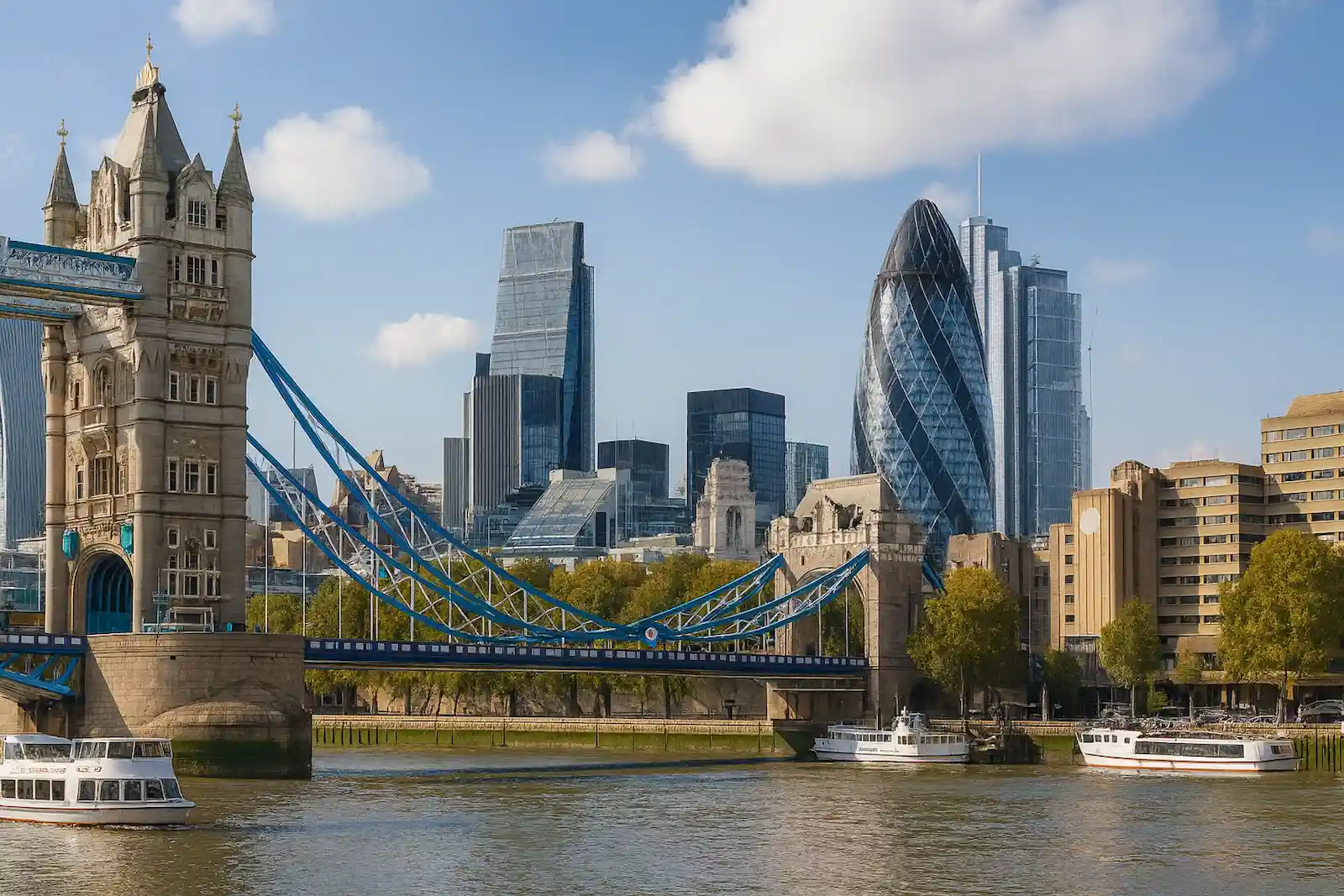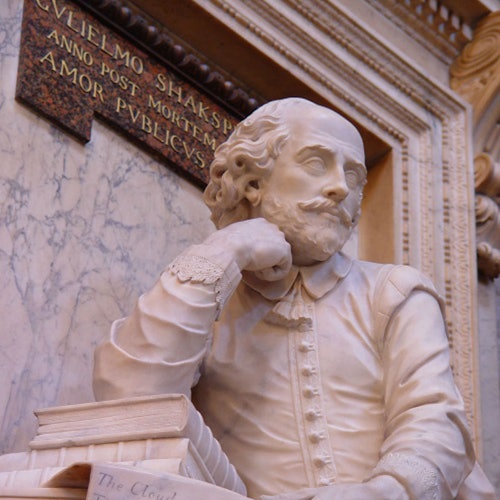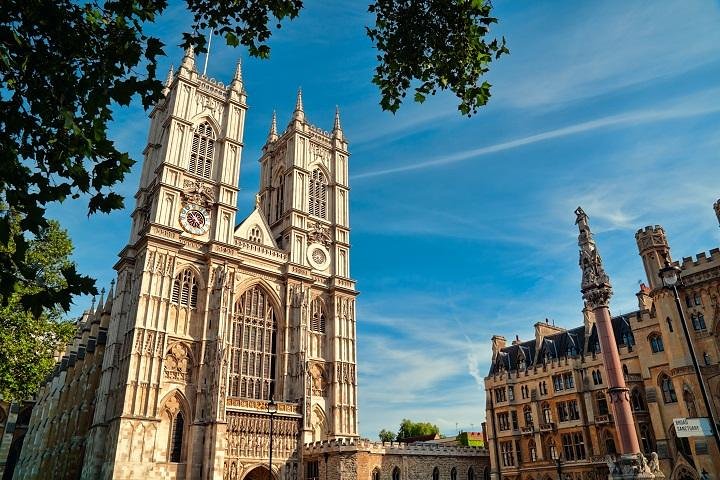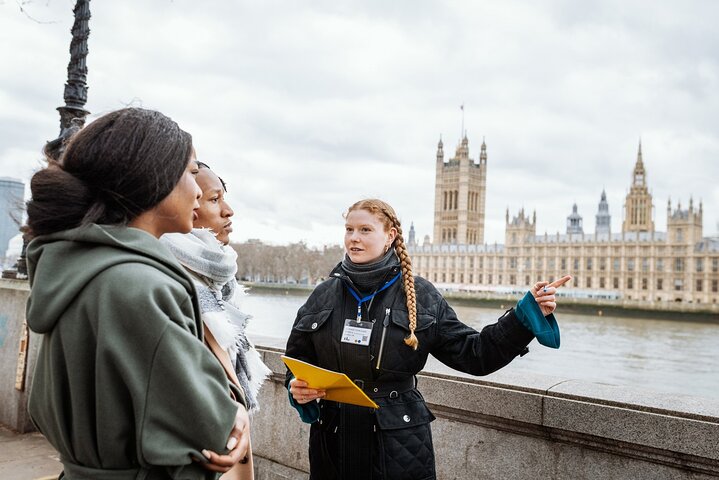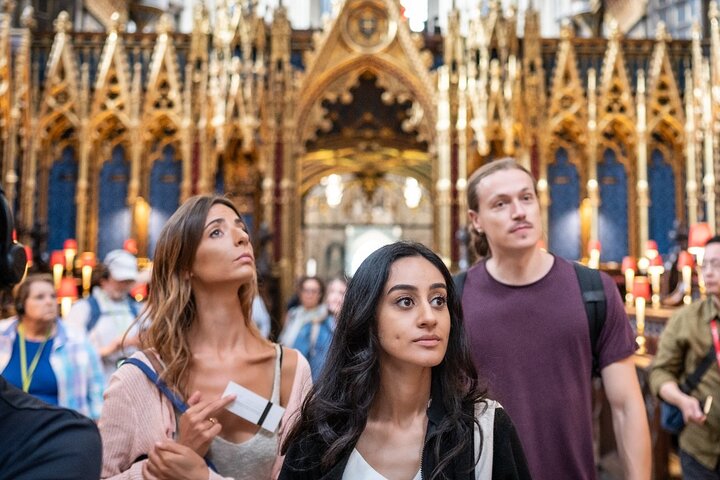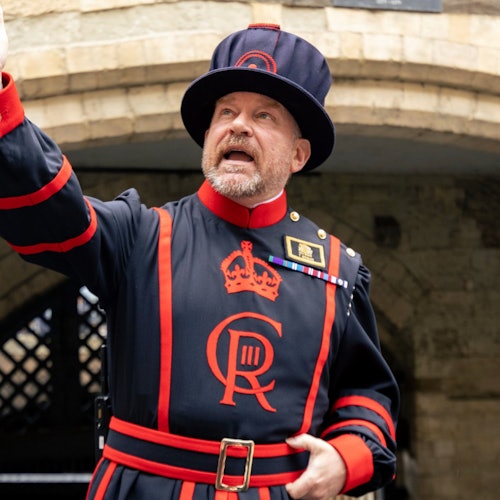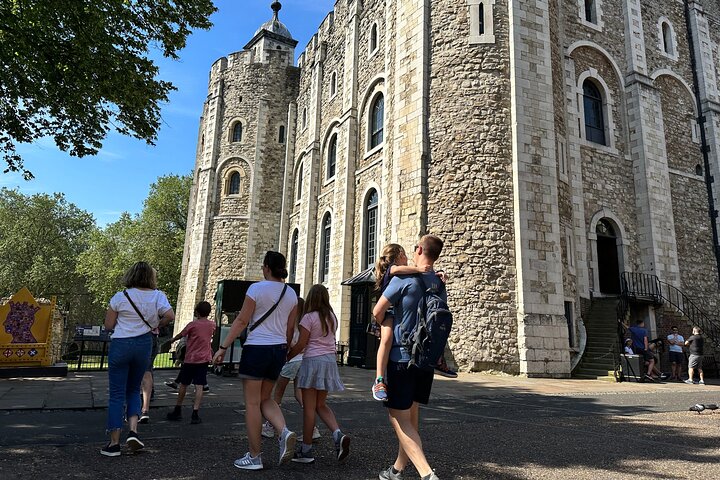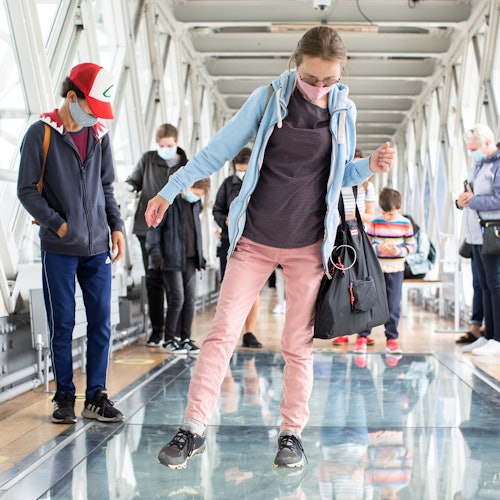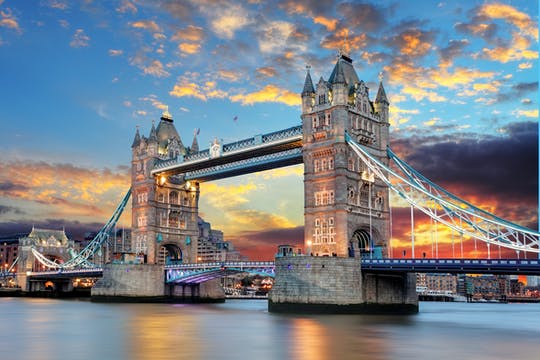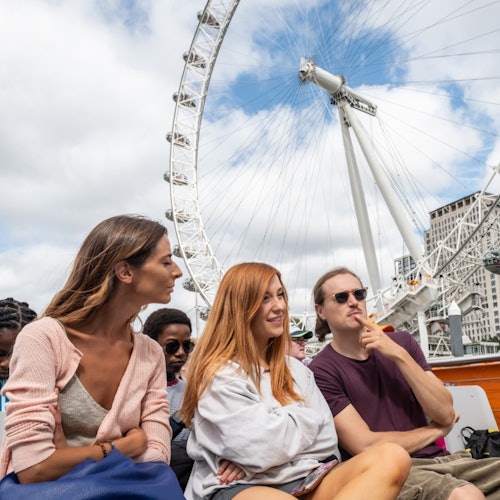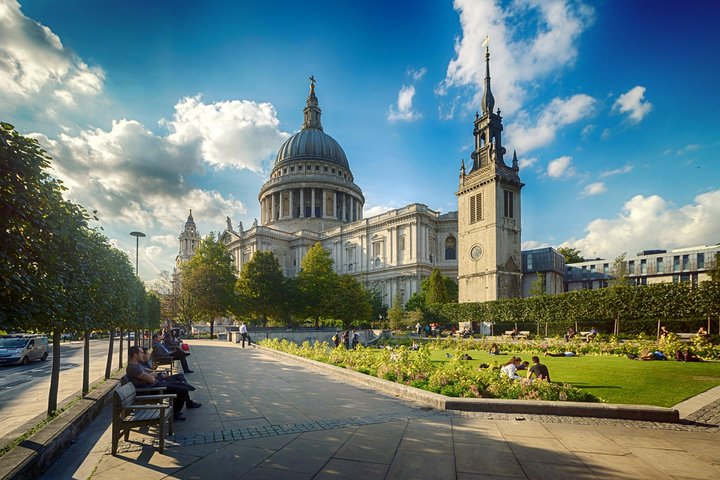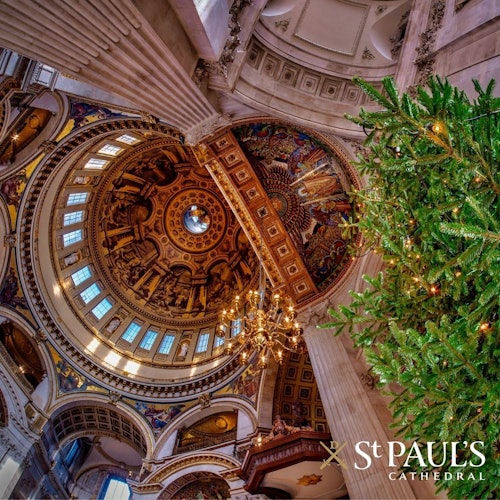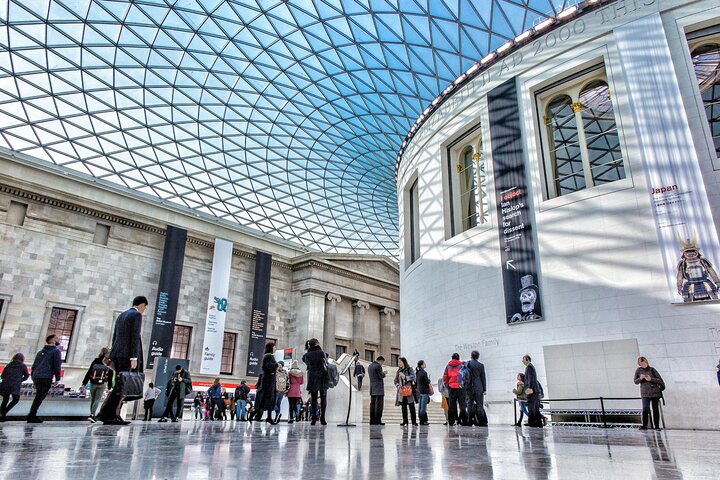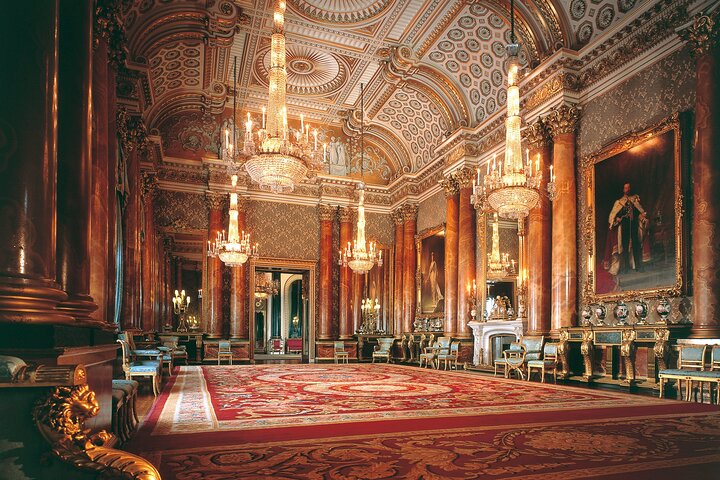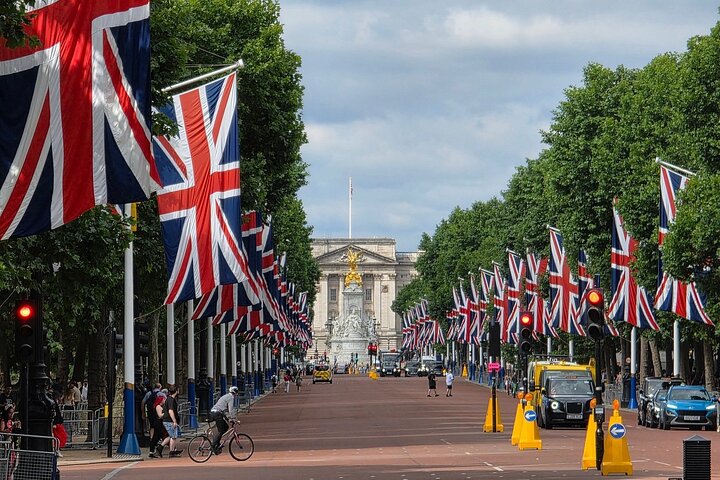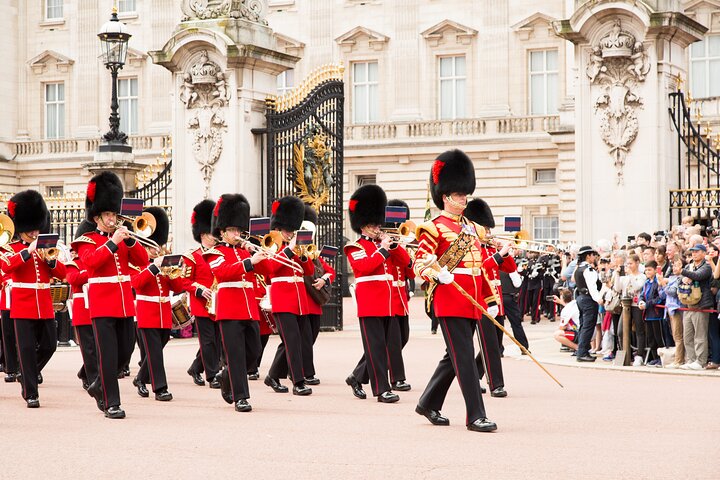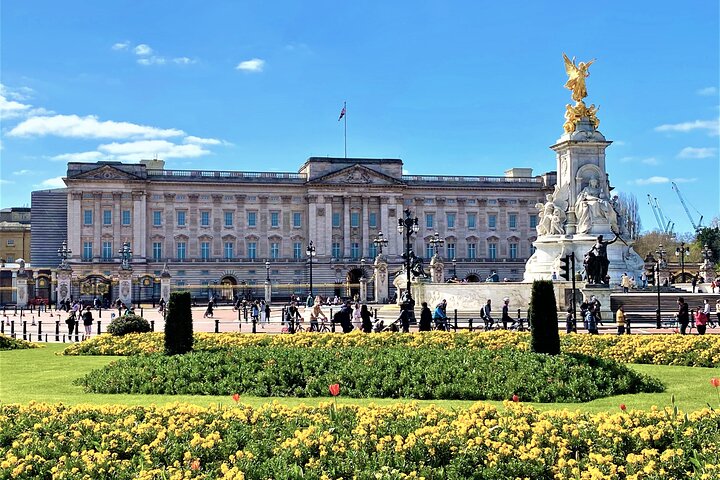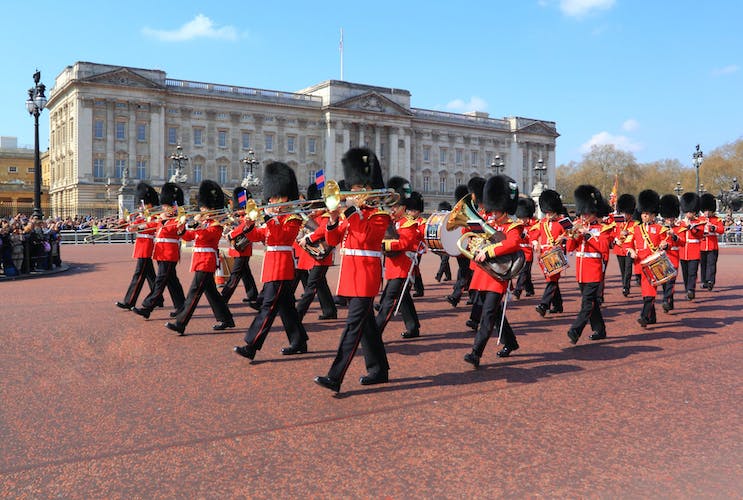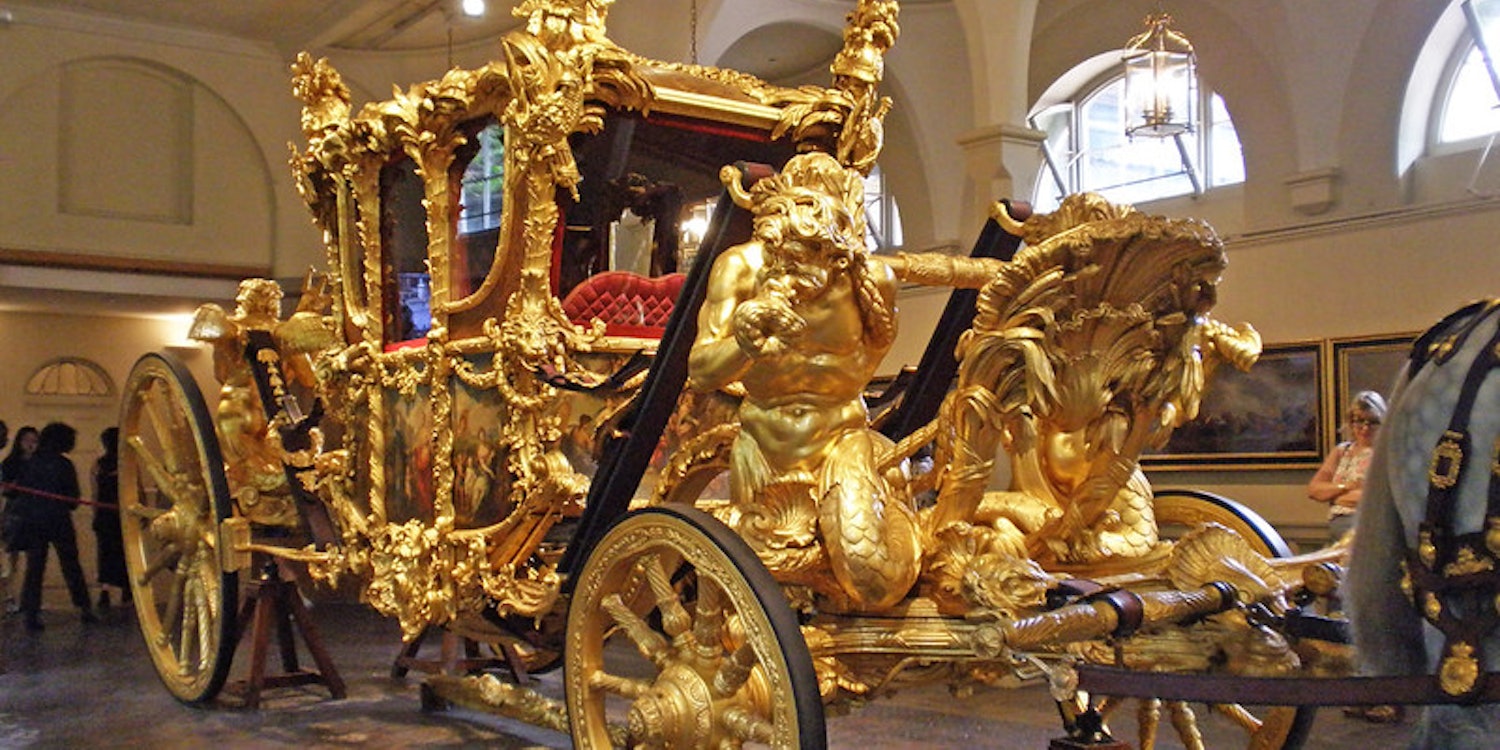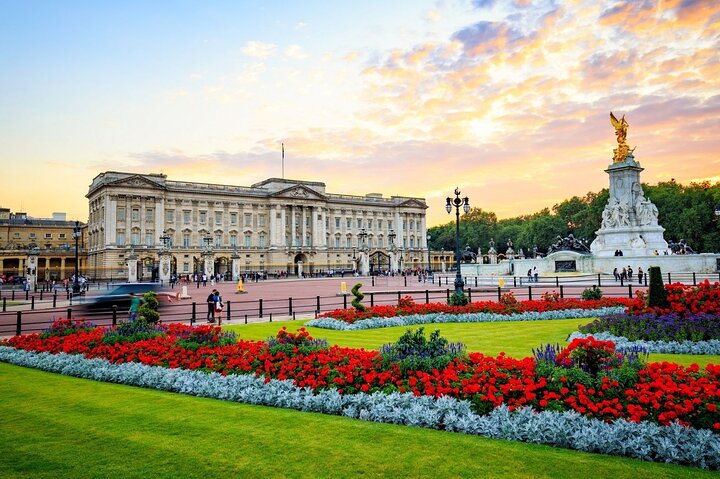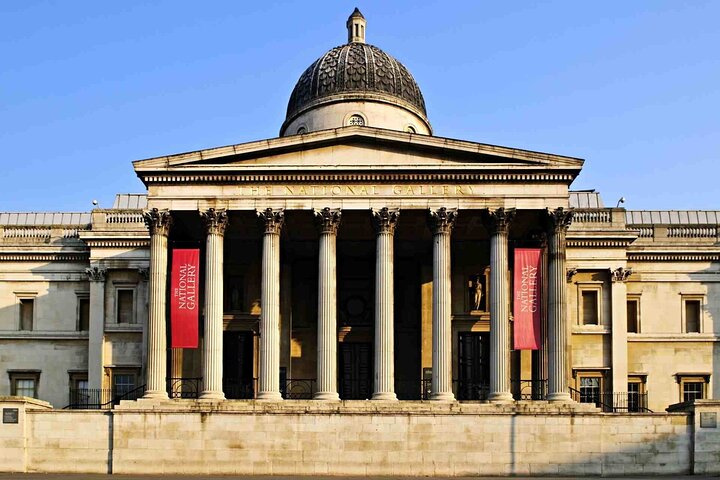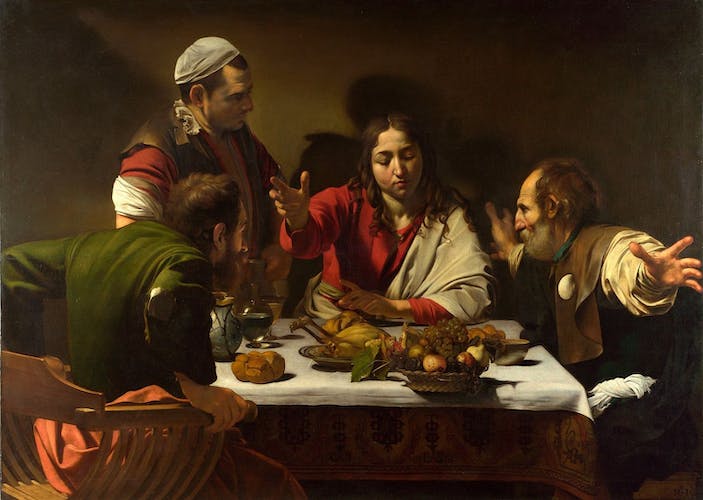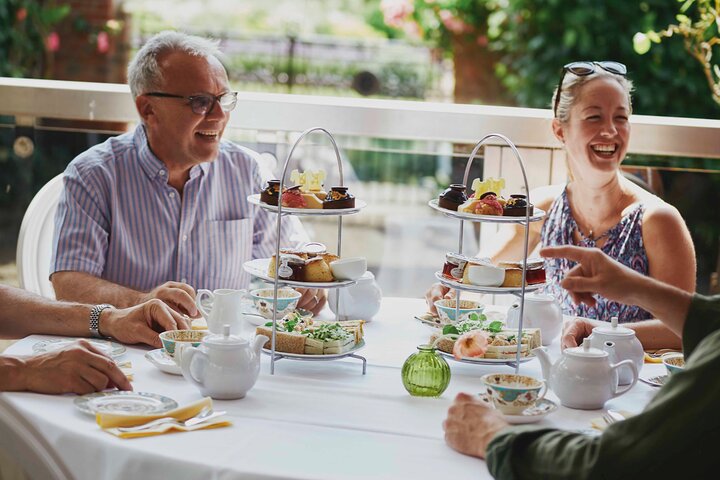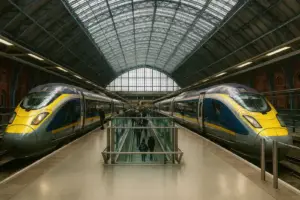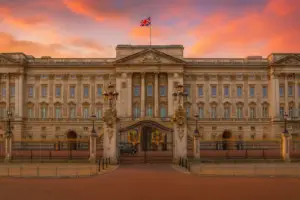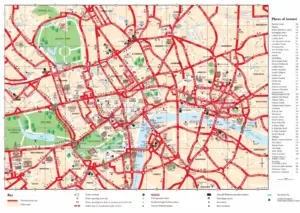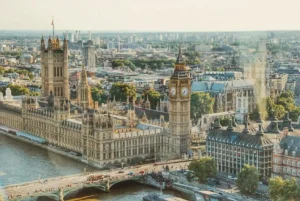Three days in London demand smart routing. This guide groups sights by area to cut transfers and queues, favors early entry at popular stops, and saves sunset for views. You’ll find concise, practical notes on hours, tickets, reservations, accessibility, and photography so each step fits smoothly.
What to see in London in 3 days (a weekend)?
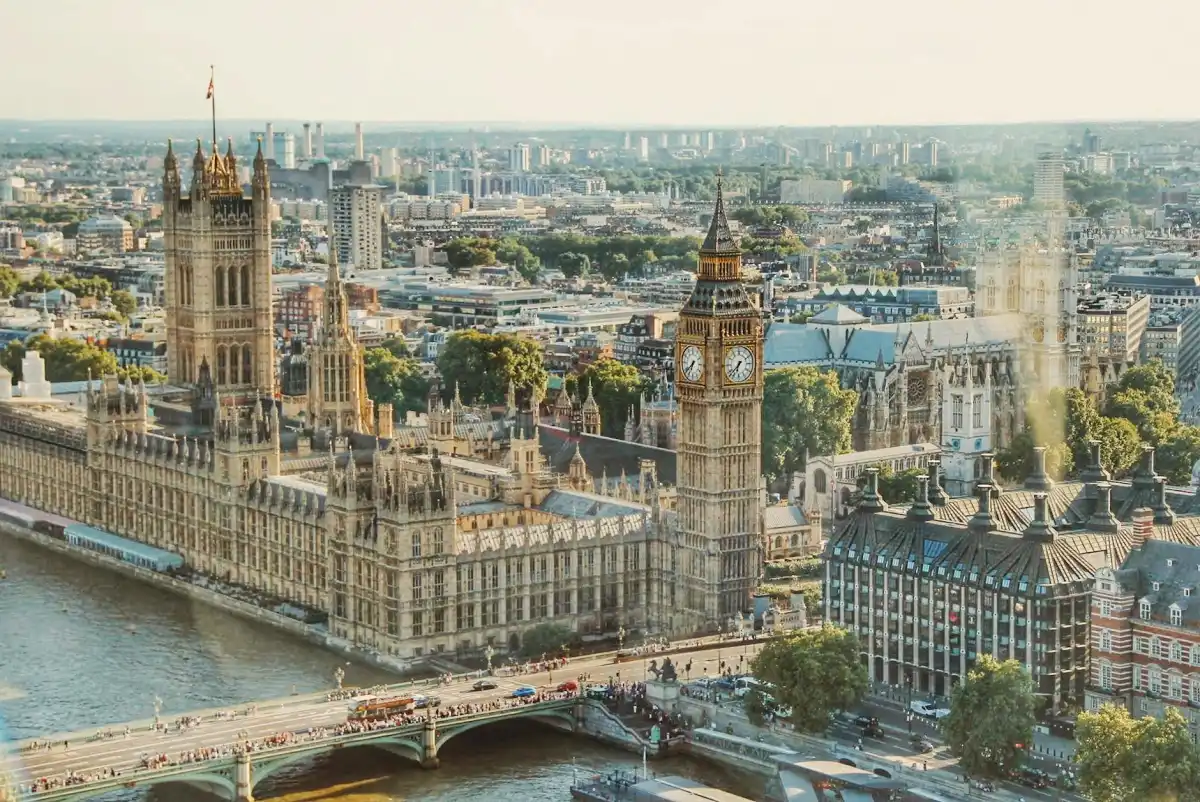
London offers a wealth of attractions and experiences for a 3-day weekend visit. To help visitors make the most of their time in this iconic city, we’ve crafted a comprehensive itinerary that covers the essential landmarks, cultural spots, and unique experiences that define the British capital.
Day 1: Historic Landmarks and Royal Heritage
Begin your London adventure at Westminster Abbey, the majestic UNESCO World Heritage site that has witnessed centuries of royal history. The morning hours offer the perfect opportunity to explore this architectural masterpiece before the crowds arrive. From there, make your way to Buckingham Palace to witness the spectacular Changing of the Guard ceremony – a display of British pageantry at its finest. The adjacent St. James’s Park provides a serene setting for a morning stroll, offering picturesque views of the palace and London’s royal gardens.
As the afternoon unfolds, direct your steps to the Tower of London, the historic fortress that houses the Crown Jewels and chronicles nearly a millennium of British history. The ancient stone walls hold countless stories of intrigue, power, and royal drama. After exploring the Tower’s depths, cross the magnificent Tower Bridge, taking time to appreciate the Victorian engineering marvel while enjoying panoramic views of the Thames.
Round off your first day in London’s vibrant West End. Start in Covent Garden, where the historic market building houses an array of boutiques and restaurants. The piazza comes alive with street performers and evening crowds. Cap the night with a theater performance – the West End offers everything from long-running musicals to cutting-edge productions, embodying London’s rich theatrical tradition.
Day 2: Cultural Treasures and Urban Parks
Your second day beckons with London’s cultural riches. Choose between two world-renowned institutions for your morning visit: the British Museum, home to human history’s greatest treasures, or the National Gallery, which houses masterpieces spanning centuries of European art. Either choice promises an enriching journey through human creativity and achievement.
The afternoon calls for exploration of Hyde Park, London’s most famous green space. This vast royal park offers a refreshing escape from urban bustle, with its serene lake, manicured gardens, and the thought-provoking Speakers’ Corner. From here, the museums of South Kensington await. The Victoria and Albert Museum showcases decorative arts and design, while the Natural History Museum offers a fascinating journey through the natural world, housed in a stunning Victorian building.
As evening approaches, head to the London Eye for a bird’s-eye view of the illuminated city. The 30-minute rotation offers spectacular views stretching across London’s skyline. Afterward, take a leisurely stroll along the South Bank, where the riverside promenade buzzes with street performers, food markets, and cultural venues. This vibrant atmosphere perfectly captures London’s contemporary spirit.
Day 3: Urban Exploration and Local Flavors
Begin your final day at Borough Market, London’s oldest food market, where centuries of culinary tradition meet contemporary gastronomy. The market’s maze of stalls offers everything from artisanal cheeses to fresh pastries, providing an authentic taste of London’s food scene. From here, walk to the nearby Tate Modern, where contemporary art finds a home in a converted power station – a perfect symbol of London’s ability to blend historic architecture with modern culture.
The afternoon presents an opportunity to explore London’s most characterful neighborhoods. Start in Notting Hill, famous for its elegant townhouses painted in pastel hues and antique shops lining Portobello Road. Then venture to Camden Town, where London’s alternative culture thrives among the historic canal-side markets and music venues.
For a fitting finale to your London sojourn, indulge in the quintessentially British tradition of afternoon tea. Choose from the city’s many elegant venues, from historic hotels to modern sky-high locations. As the day draws to a close, ascend either The Shard or the Sky Garden for a farewell view of London’s skyline. These vantage points offer a memorable perspective of the city you’ve explored, as the setting sun gilds the urban landscape in golden light.
Palace of Westminster (Houses of Parliament)
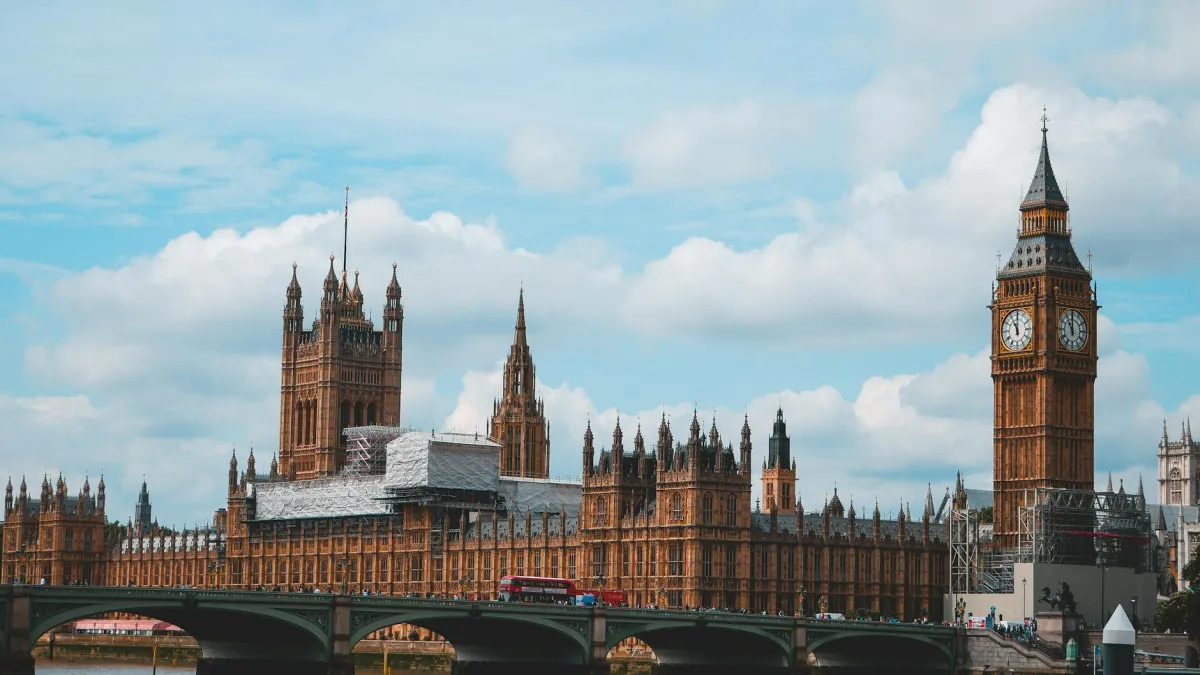
The Palace of Westminster, home to the Houses of Parliament, has been a UNESCO World Heritage Site since 1987. Standing proudly on the banks of the Thames, it served as a royal residence in the Middle Ages and today showcases an unmistakable neo-Gothic style. Its most famous feature is the Elizabeth Tower, better known as Big Ben.
How to visit (tours and schedules). There are two main ways to explore the interior: a guided tour (90 minutes) or a multimedia tour with audio guide in 10 languages, including Spanish. Tours operate on Saturdays year-round, and during the summer parliamentary recess (22 July–1 September 2025) they are also available on weekdays: guided tours from Tuesday to Saturday, and multimedia tours from Monday to Saturday. The last entry is usually at 16:00 (guided) or 16:15 (multimedia); arrive at least 20 minutes early for security checks.
Explore the beating heart of London in just 1.5 hours! This walking tour of Westminster takes you through the capital’s…
This fascinating tour of one of London's most visited areas will introduce you to some of London's mo…
Explore Westminster, one of the wealthiest Boroughs in the Western world, the political heart of Britain and the home of…
Discover with us the most emblematic and famous area of London. On this tour we will visit the Westminster area,…
Explore the wonders of London on this history-filled walking tour, which will take you to some of the city's most…
Wandering around central London's most iconic sights is something no visitor can miss, but most peopl…
The Borough of Westminster is one of the most important areas of the city of London , it is …
Hello hello everybody! Let's explore one of the most beautiful and historic city in the world called London together!
Attending debates. Both UK residents and visitors can watch parliamentary debates for free from the public galleries when Parliament is in session, usually Monday to Thursday (and some Fridays). No tickets are needed for general debates (tickets are required for Prime Minister’s Questions). Entry is via the Cromwell Green entrance and spaces are limited, so queues are common.
Westminster Abbey

Westminster Abbey is one of London’s most iconic landmarks and part of its UNESCO World Heritage ensemble. Every coronation since 1066 has taken place here, and the Abbey is the resting place of many monarchs and historical figures. Its stunning Gothic interior, royal chapels, and tranquil cloisters make it a must-visit for anyone interested in British history and culture.
Among its most notable burials are Elizabeth I and Mary I (in the Henry VII Lady Chapel), scientists Isaac Newton and Charles Darwin, and the ashes of Stephen Hawking. In Poets’ Corner you’ll find memorials and graves of literary greats such as Charles Dickens and Geoffrey Chaucer (Lord Byron is commemorated here but not buried in the Abbey). Highlights include the historic Coronation Chair, the intricate Cosmati Pavement before the high altar, the peaceful Cloisters, the Chapter House, and the tomb of the Unknown Warrior.
Queen’s Diamond Jubilee Galleries (optional): this exhibition, located in the triforium, offers unique views over the Abbey’s interior and displays a fascinating collection of historic artefacts. It requires a separate timed-entry ticket.
Tips for your visit
- ⏰ Opening hours: Monday–Friday 9:30–15:30 (last entry); Saturday 9:00–15:00 (last entry). Sunday open only for religious services (no tourist entry).
- 💶 Tickets (include audio guide): adult £30; seniors 65+ and students £27; children 6–17 £13; under-6s free; family pass (1 adult + 1 child) £30.
- 🖼️ Galleries (add-on): extra £5 adult; children 6–17 free; typical opening times: Mon–Fri 10:00–15:00, Sat 9:30–15:00, closed Sun.
- 👣 Best time to visit: arrive early on a weekday to avoid tour groups; book in advance on the official website.
- 📸 Photography: generally allowed during visits (no video, flash, tripods, or selfie sticks), but not during services or inside the Queen’s Diamond Jubilee Galleries.
- 🙏 Etiquette: this is an active place of worship; dress respectfully and maintain silence in designated areas.
- 🕯️ Religious services: attending services is free; times vary and some areas may close for special ceremonies.
- 🗺️ Verger-guided tours: add a verger tour on-site for an extra £10 on top of your standard ticket.
Piccadilly Circus

Piccadilly Circus is one of the most famous landmarks in London’s West End — a bustling meeting point where Regent Street, Piccadilly and Shaftesbury Avenue converge, surrounded by theatres, flagship stores, and dazzling neon signs. It was created in 1819 to link the newly built Regent Street, designed by John Nash, with the historic Piccadilly thoroughfare.
Today, it’s best known for the giant Piccadilly Lights — one of Europe’s most recognisable advertising displays — and the Shaftesbury Memorial Fountain, topped by the winged figure of Anteros (though many mistake him for “Eros”). As dusk falls, the square comes alive with street performers, the glow of the screens, and the energy of nearby nightlife districts.
Practical Information
- Price: completely free to visit.
- Opening hours: open 24 hours a day, year-round.
- Getting there: Piccadilly Circus Underground station (Bakerloo and Piccadilly lines). The Tube runs roughly from 05:00 to midnight (slightly shorter hours on Sundays), with Night Tube service on some lines Friday and Saturday nights.
- Accessibility: Piccadilly Circus station does not have step-free access; at street level, main pedestrian crossings are at grade.
- Top tip: visit at sunset or after dark to see the lights at their best, and combine it with nearby Soho, Leicester Square, or a performance at the historic Criterion Theatre.
Tower of London

The Tower of London is London’s medieval fortress on the north bank of the Thames and a UNESCO World Heritage Site. Founded after the Norman Conquest and anchored by the White Tower begun under William the Conqueror (1078), it evolved from royal palace and arsenal to state prison and, today, home of the Crown Jewels and the legendary ravens. Major expansions in the 13th century under Henry III and Edward I added concentric walls, towers and a moat, shaping the castle you see now.
What to look for: the Crown Jewels in the Jewel House, the Romanesque Chapel of St John inside the White Tower, the Line of Kings armour display, Tower Green & Scaffold Site, the Bloody Tower (Princes in the Tower), the battlements walk and the resident ravens.
Temporary notices: The Chapel Royal of St Peter ad Vincula is closed for conservation until 30 November 2025. The Middle Tower entrance is undergoing works until 26 April 2026 (use Middle Drawbridge when signed).
Visitor Tips
- ⏰ Best time to visit: Book the first 09:00 entry and head straight to the Crown Jewels to beat queues. Avoid peak weekends/school holidays if you can.
- 🎫 Yeoman Warder tours: Incluidas con la entrada. Empiezan en la Bell Tower y salen aproximadamente cada 45 minutos; el horario puede variar y adaptarse o cancelarse por clima. No son reservables.
- 📸 Crown Jewels: No photography inside the Jewel House. Elsewhere, personal photos are generally allowed.
- ⚡ Guided options: Add the official audio guide at checkout (from £4.00) for curated routes in multiple languages.
- ⏱️ Duration: Allow at least 3 hours for a thorough visit.
- 🚇 Getting there: Tower Hill Underground (District/Circle) is ~5 minutes on foot; several mainline stations are within a 10–20 minute walk.
- 🌙 Extra: The nightly Ceremony of the Keys runs 21:30–22:05 with a separate, limited ticket—book well ahead.
Tower Bridge
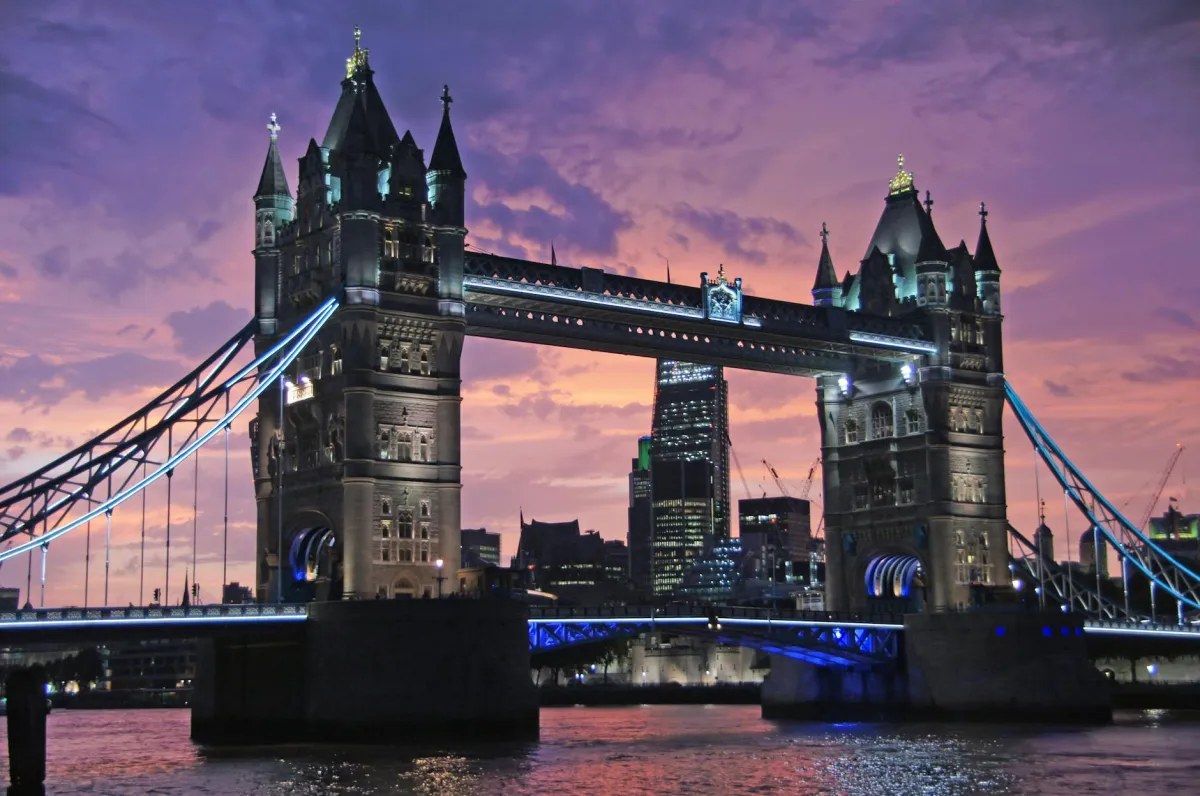
Tower Bridge is over 120 years old and is one of the city’s iconic landmarks. At night, dressed in lights, it is impressive. From the bridge and its high-level Walkways you can see The Shard, St Paul’s Cathedral and Canary Wharf; on a clear day you can also spot the London Eye. This monument was inaugurated in 1894 and took 8 years to build. Its permanent exhibition was first opened to the public in 1982. Inside you can visit the high-level Walkways with glass floors and the Victorian Engine Rooms.
This London landmark is one of the must-see sights for quality sightseeing and is suitable for all tastes. It was built because the city began to need a new river crossing, as commercial development increased greatly in the 19th century. The problem that arose at that time was mainly that there was no possible way to leave a traditional fixed bridge, as sailing ships would then not be able to access the harbour.
A solution to this problem was sought for years and was found by the Special Bridge or Subway Committee in 1877. Beforehand, they had to decide between more than 50 designs that were submitted. Until 1884, no design was considered valid due to many different reasons, among them the insufficient clearance height of the bridge. However, the bascule bridge as we know it today was the solution.
Two towers were added to the bridge, which are still standing today and give the bridge its name. These were built on pillars. Parliament approved the construction of this marvellous bridge, which today is also a monument in its own right, a year later. It is Victorian Gothic (neo-Gothic) in style and lends an aura of antiquity and mystery to the area in which it stands. The high-level Walkways stand about 42 metres above the Thames and span 61 metres between the towers, which has allowed for adequate river traffic since its opening.
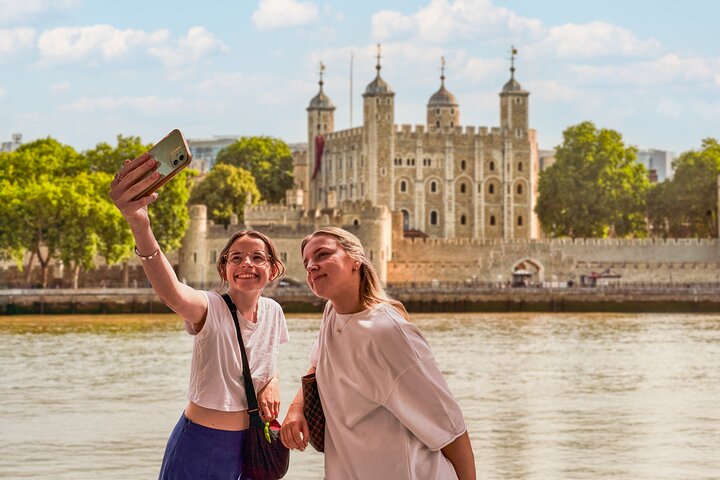
Tower of London: Guided Tour with Thames River Cruise
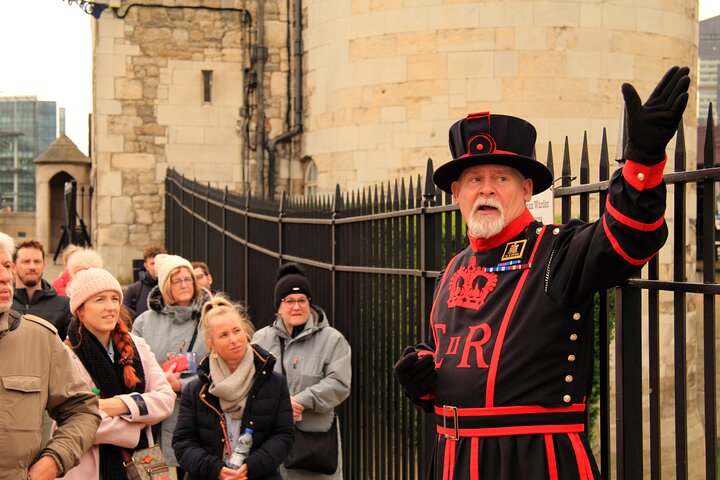
Tower of London & Crown Jewels Tour with Beefeater Meet & Greet
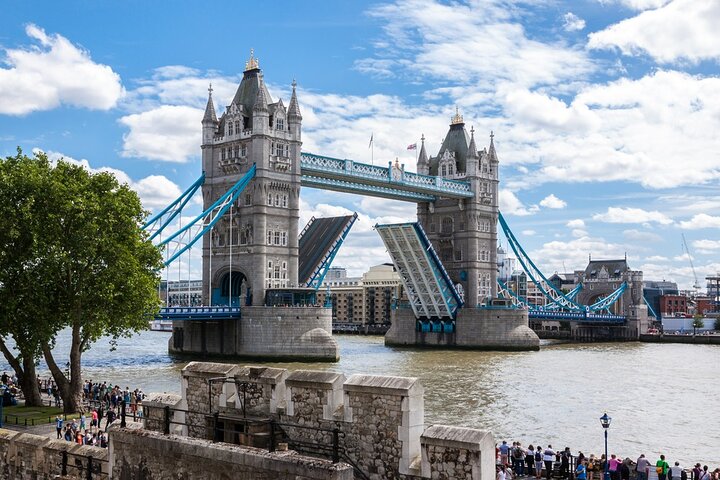
Easy Access Tower Bridge and Engine Room & Scenic Thames Cruise
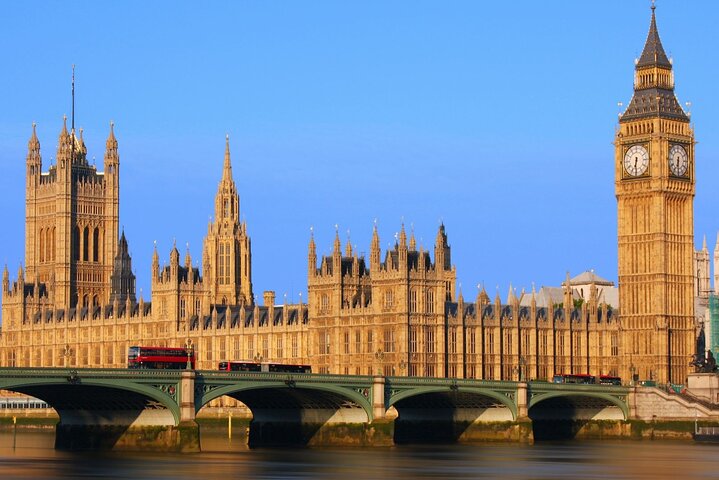
London In One Day Tour with River Cruise & London Eye Option
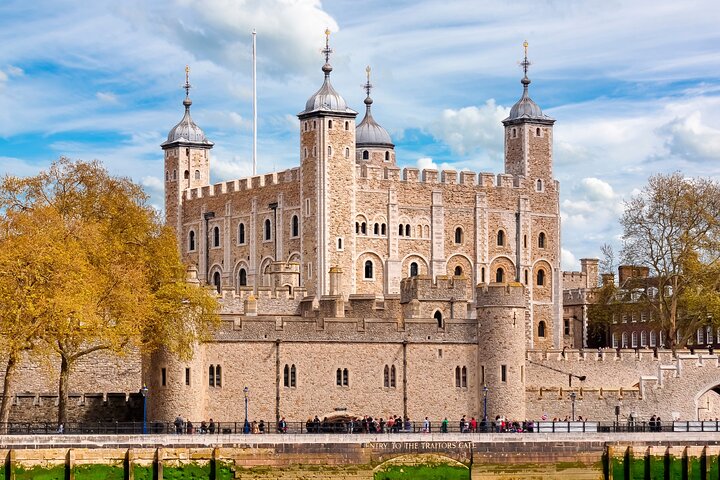
Tower of London Guided Tour with Nearby Rickshaw Ride
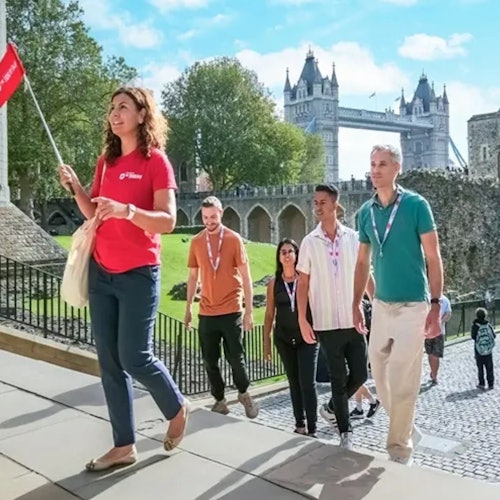
Tower of London: Guided Tour + Thames River Cruise + Crown Jewels Access
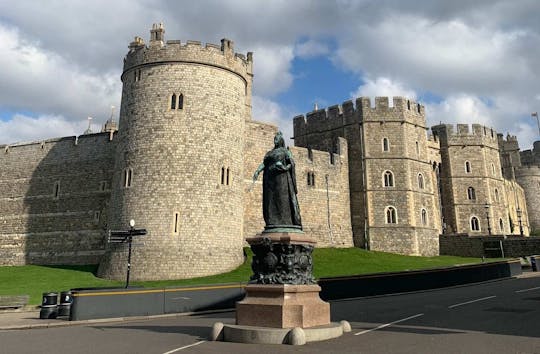
Windsor Castle and optional Tower of London tour with entry tickets
St Paul’s Cathedral
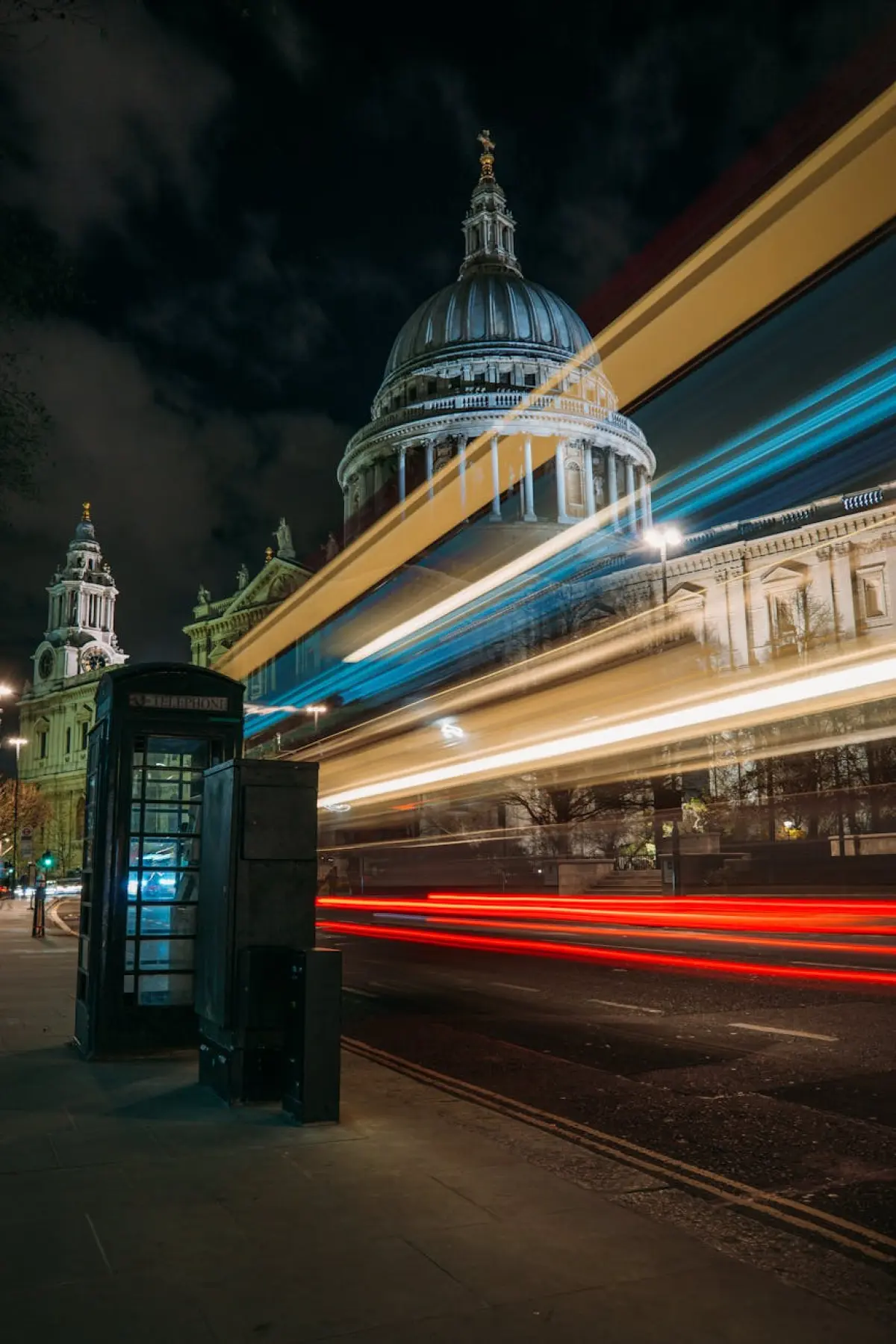
St Paul’s Cathedral is the great English Baroque masterpiece of Sir Christopher Wren, built after the Great Fire of 1666 and consecrated in 1697. Its iconic dome has dominated the City skyline since 1710 and has hosted major national ceremonies, including the funerals of Horatio Nelson, the Duke of Wellington, and Winston Churchill, as well as the wedding of Charles and Diana. Inside, look for the dome paintings attributed to Sir James Thornhill and the spectacular Victorian mosaics in the choir by William Blake Richmond.
Photography policy has changed: non-flash photography for personal use is now permitted in the cathedral floor, crypt, and the Stone and Golden Galleries, but not in the Whispering Gallery or during services. Sightseeing admission includes a multimedia guide and usually short talks or free guided tours with official guides.
What to See at St Paul’s Cathedral in London
The Dome and its three galleries. Climb 257 steps to the Whispering Gallery, famous for its circular acoustics; continue (376 steps in total) to the Stone Gallery, outside the dome; and complete the 528 steps to the Golden Gallery at 85m, with superb views of London’s skyline. Access is stairs only and may be restricted for capacity reasons.
The Crypt. One of the largest in Europe, it houses the tombs of Nelson, the Duke of Wellington, and Wren himself, along with memorials to many figures from British history. Churchill is not buried here but is commemorated with a memorial.
Visitor Information, Hours & Prices
- ⏰ Opening hours: Mon, Tue, Thu, Fri & Sat 08:30–16:30; Wed 10:00–16:30; last entry 16:00. Dome Galleries usually open 09:30–16:15 (Wed 10:00–16:15). Sundays: no sightseeing visits (cathedral open for worship only).
- 🗓️ Dome Sundays (dome only): Sundays until 28 Sept 2025, 12:30–14:00, with specific ticket (see below).
- 🎟️ Admission (Mon–Sat): Adult £26; Child (6–17) £10; Concessions (students & 65+) £23.50; Family ticket 2A+2/3C £62 or 1A+2/3C £36. Optional 10% donation (e.g., adult £28.60). Includes multimedia guide and access to all three dome galleries.
- 🎫 Dome Sundays: Adult £13.50, Child £5, concessions available.
- 🎧 Included tours: free 20–30 min talks and 60–90 min guided tours for ticket holders, offered between ~11:00–15:00 depending on the day.
- 🔭 Triforium Tour (add-on): access to the library, Trophy Room, and Geometric Staircase; £15 per person on top of general admission.
- 🥾 Stairs: 257 steps to Whispering, 376 to Stone, and 528 total to Golden. No lift; not recommended for visitors with vertigo or mobility issues.
- 📸 Photography: allowed without flash for personal use on the floor, crypt, Stone, and Golden Galleries; not in Whispering or during services.
- 💡 Tip: arrive early and check the closure schedule before visiting (events and services may affect hours).
London Eye

The London Eye, designed by architects Marks Barfield, is the giant observation wheel on the South Bank of the Thames. With 32 glass capsules and a 30-minute rotation, it offers 360° views over London’s landmarks, from Big Ben and Parliament to St Paul’s Cathedral.
London Eye Hours & Prices
⏰ Hours: generally operates most of the year from around 10:00 to 20:30, with extended hours in peak season and occasional January closures for maintenance. Always check the official calendar before visiting.
🎫 Tickets (online from):
– Standard from £29 adult (walk-up from £39).
– Fast Track (priority boarding) from £44 adult.
– Flexi Fast Track (any time on chosen day) from £55 adult.
– Deluxe Package (Fast Track, photo & guide) from £70.40 adult.

London Eye Ticket — Panoramic Views

London Eye Fast-Track Ticket

Fast-track London Eye Ride with Champagne
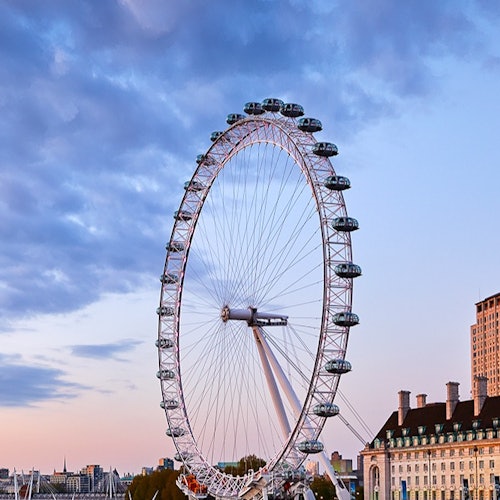
London: London Eye Ticket, Hop-on Hop-off Tour & River Cruise
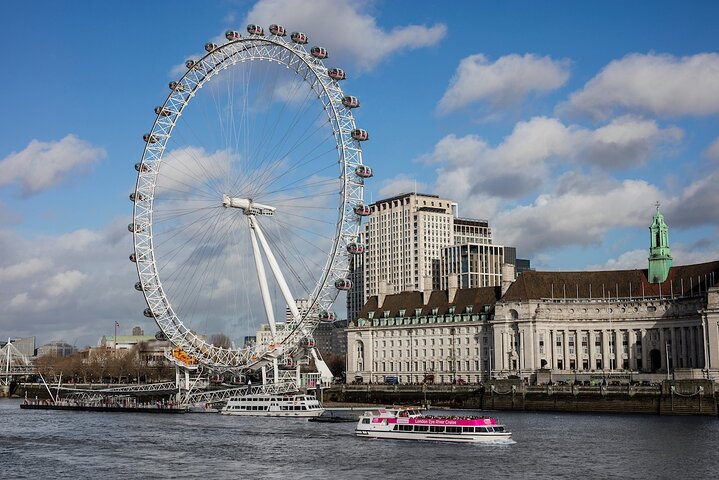
London Eye River Cruise and Standard London Eye Ticket

London Eye – Champagne Experience Ticket
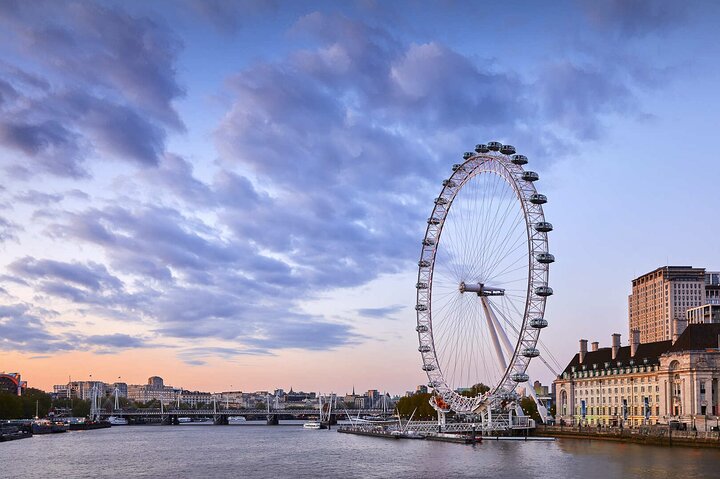
London Eye, Standard & Fast Track Ticket
Tips for Your Visit
- Best time: at sunset (“golden hour”) for stunning colours and city lights.
- Crowds: early mornings are quieter; in high season consider Fast Track.
- Duration: each rotation lasts about 30 minutes; allow buffer time for boarding.
- Photography: on clear days, you can see for miles — even as far as Windsor.
- Accessibility: step-free access; maximum 2 wheelchairs per capsule (book in advance).
Useful Information
- Capsules: 32 capsules; regular capacity up to 28 people each. Private Pods hold up to 25 people.
- Getting there: Waterloo (Underground) is 5 min walk. Also Westminster, Embankment, and Charing Cross within 10–15 min.
- 4D Experience: currently not available.
British Museum
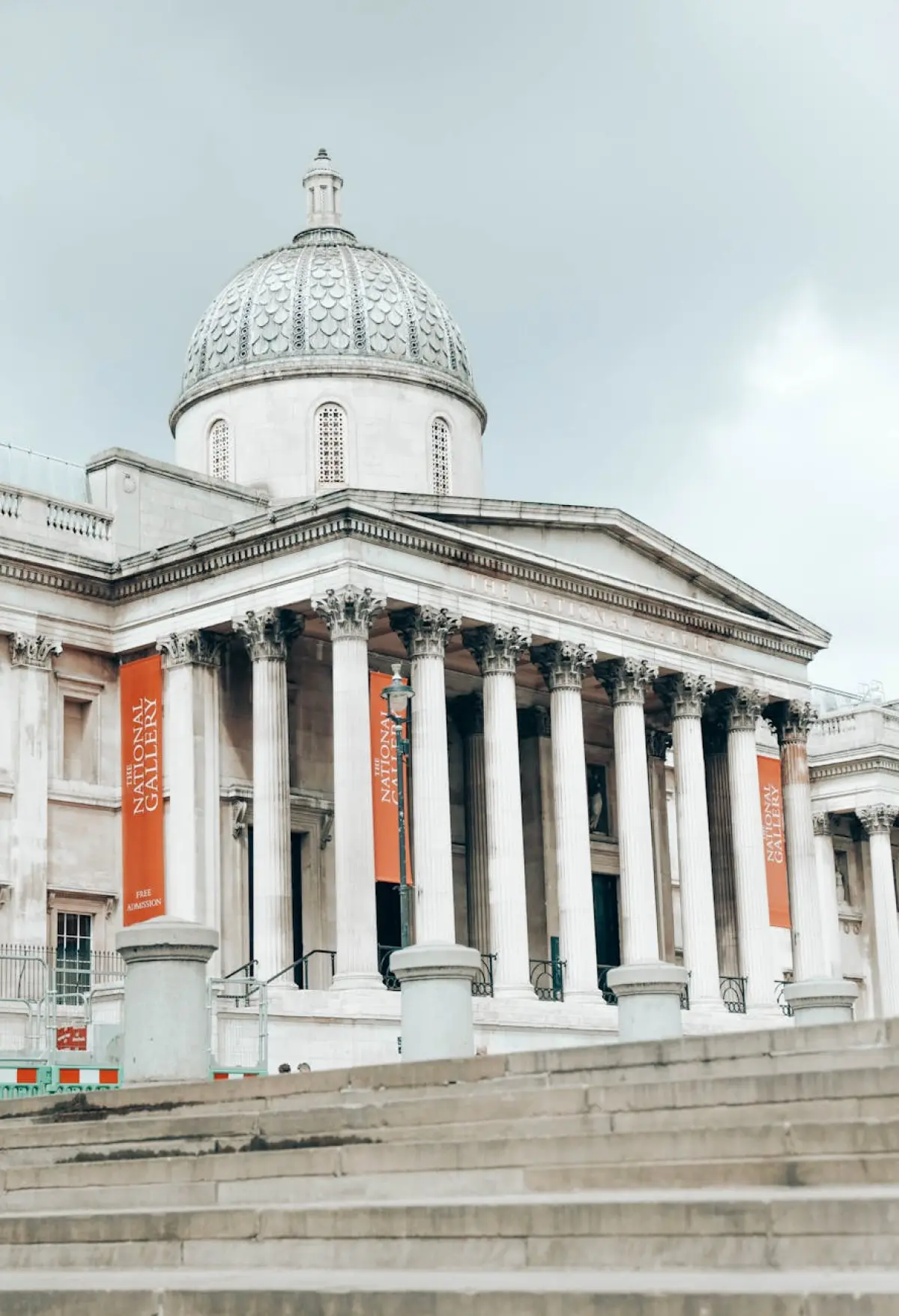
The British Museum is one of London’s unmissable attractions. Founded in 1753 and opened to the public in 1759, it was the world’s first national museum open to everyone. Its collection began with the bequest of physician and collector Sir Hans Sloane and now spans millions of objects telling the story of human history across two million years.
Among its most famous treasures are the Rosetta Stone, Egyptian mummies, the Parthenon sculptures, the Hoa Hakananai’a moai, the Lewis Chessmen, the Sutton Hoo treasures, the Assyrian lion hunt reliefs, and the Standard of Ur. The museum is vast — if short on time, plan a “highlights” route of 2–3 hours and save the rest for another visit.
For context and storytelling, consider joining a free themed tour of the British Museum — in a couple of hours, you’ll see the essentials and hear the history behind each piece.
Practical Information
- 🎫 Admission: permanent collection is free. Temporary exhibitions are ticketed, prices vary (e.g., Hiroshige: Artist of the Open Road £20 adult; Ancient India: Living Traditions £22 adult). Discounts often available for young people, students, and members.
- ⏰ Hours: daily 10:00–17:00; Fridays until 20:30. Last general entry 16:45 (Fri 20:15). Closed 24–26 December. On late Fridays, last admission is usually at 19:00.
- 🧾 Booking: general entry is free but timed passes are recommended online to avoid queues; walk-ins allowed via Montague Place if space permits.
- 📍 Location: Great Russell Street, Bloomsbury. Nearest Tube: Tottenham Court Road, Holborn, Russell Square, Goodge Street. Several bus routes nearby.
- 🧳 Security & facilities: bag checks at entry; no wheeled suitcases or large items. Cloakroom 10:00–17:00 (Fri until 20:30); last drop-off 1 hour before closing. Cafés and a restaurant available.
Visiting Tips
- Best times: arrive early or after 15:00; avoid weekends and school holidays if possible. Friday evenings tend to be quieter.
- Map in hand: download the museum map and plan a route through Room 4 (Egyptian sculpture), 10 (Assyrian reliefs), 18 (Parthenon), 41 (Sutton Hoo), 49–50 (Roman Britain), and 62–63 (Mummies).
- Time management: for essentials only, focus on 6–8 key objects and allow time for the Great Court shop.
Must-Sees
- 🗿 Rosetta Stone
- 🧱 Assyrian lion hunt reliefs
- 🏛️ Parthenon sculptures (Room 18)
- 🧩 Lewis Chessmen
- ⚔️ Sutton Hoo treasures
- 🪦 Egyptian mummies (Rooms 62–63)
- 🗿 Hoa Hakananai’a moai
- 🚩 Standard of Ur
Hyde Park
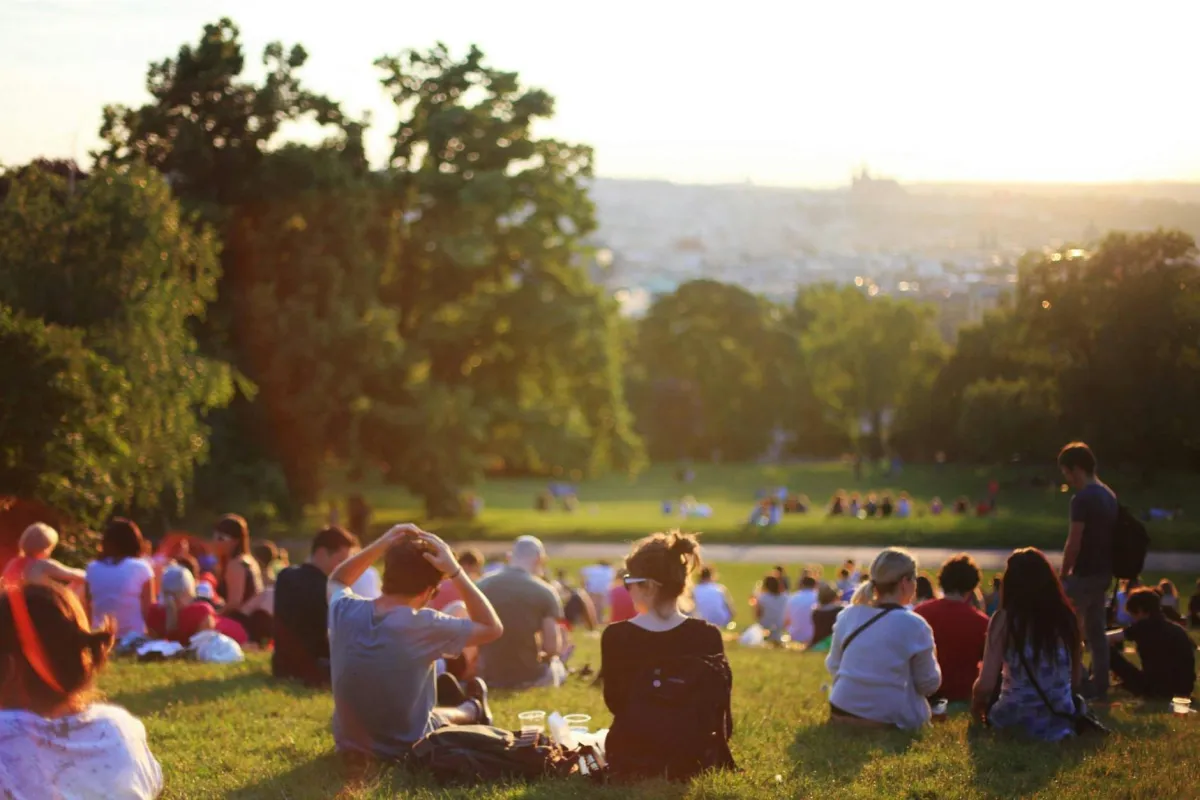
Hyde Park is one of London’s largest parks and one of its eight Royal Parks. In the 16th century it was taken by Henry VIII from Westminster Abbey. It remained a royal hunting ground until it was opened to the public under Charles I, after having been improved. This large park, as well as providing beauty and tranquillity, has many stories to tell in every corner.
Some of the interesting places and monuments in Hyde Park are, for example, the Rose Garden or the Diana Memorial Fountain. There are other memorials scattered around the centre, such as the Holocaust Memorial, the Norwegian War Memorial, the Queen Caroline Memorial and the Cavalry Memorial, among others. Nor should we forget the fountains and statues.
Other very interesting points in the park are Speakers’ Corner, where everyone can give their opinion without censorship (sujeto a la ley y normas del parque). There are also many sports, such as rowing, skating, cycling, swimming, tennis, padel and lawn bowls, and horse riding. The park is open from 5 a.m. to 12 midnight.
Camden Town
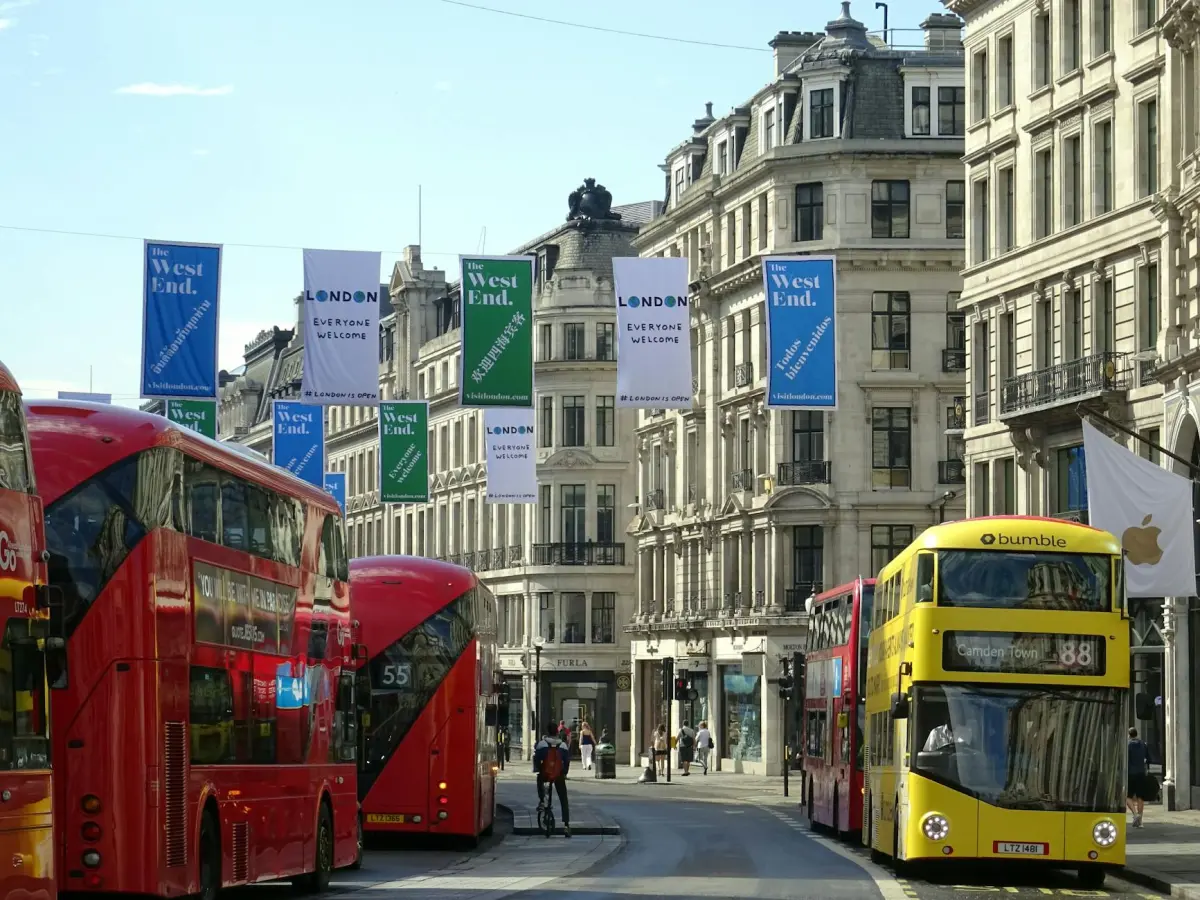
Camden Town is the alternative heart of London — a vibrant mix of street art, indie shops, legendary music venues, and the vast Camden Market (including Stables Market, Camden Lock, and Hawley Wharf). Entry to the market is free, and it’s packed with vintage finds, crafts, and international street food.
What to See and Do in Camden Town
Wander through the old Victorian stables of Stables Market, browse the stalls along the Regent’s Canal at Camden Lock, and finish with a walk up to Primrose Hill for skyline views. Music lovers should check the schedules at the Electric Ballroom and the Jazz Café, which change regularly.
Opening times for Camden Market: open daily 10:00–19:00 (some food areas open until around 23:00). Open on bank holidays; individual stall hours may vary slightly.
Camden Town – Useful Tips
- 🗓️ When to go: weekends are livelier; for fewer crowds, arrive before 11:00.
- 🍜 Food: huge choice of international street food, with plenty of vegetarian and vegan options.
- 💳 Payment: most vendors accept contactless; carry a little cash just in case.
- 🚶♀️ Getting around: explore on foot and combine with a canal walk towards Little Venice.
Buckingham Palace
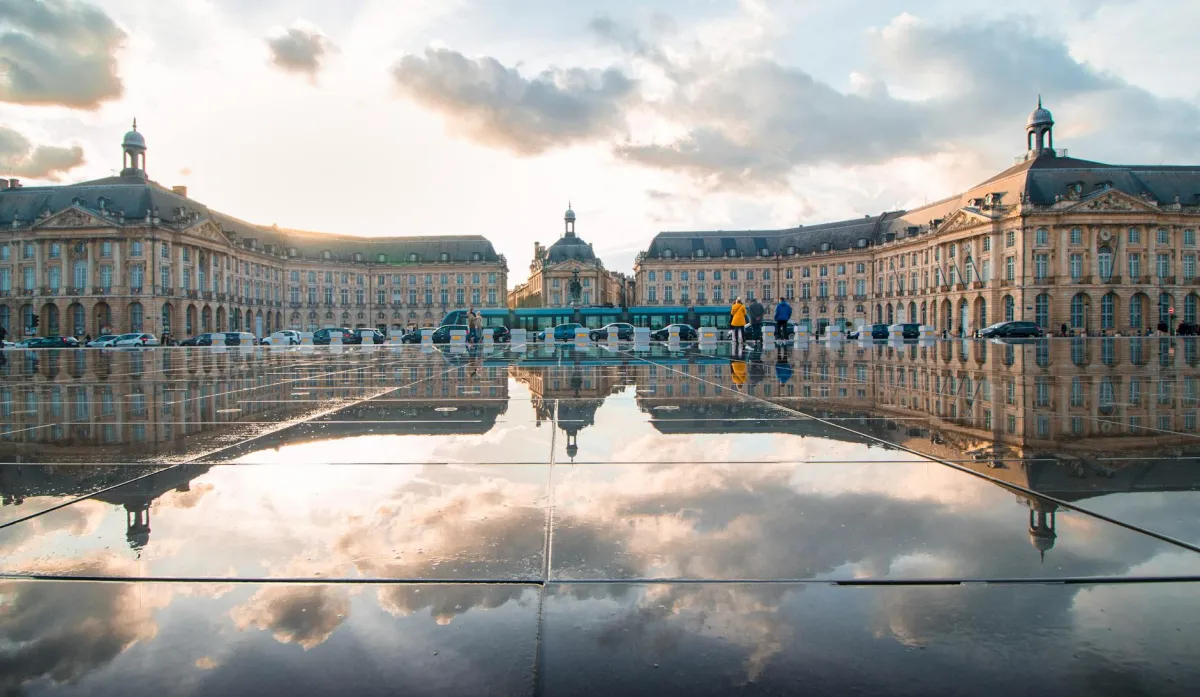
Buckingham Palace has been the official residence of the British monarch since 1837 and is the setting for the famous Changing of the Guard. The State Rooms open to visitors only in summer — in 2025, from 10 July to 28 September. You can also add the East Wing Tour, visit the Royal Gardens, explore The King’s Gallery (temporary exhibitions), and see the royal carriages at the Royal Mews.
Tickets, Hours & Visiting Options
- State Rooms (Summer 2025): Advance Adult £32, Young Person 18–24 £20.50, Child 5–17 / Disabled Visitor £16 (under 5s free). Slightly higher prices on the day.
- Royal Day Out (State Rooms + The King’s Gallery + Royal Mews): Adult £61.20, Young 18–24 £39.10, Child 5–17 / Disabled Visitor £30.60 (advance). About 10% saving compared to buying separately.
- State Rooms + East Wing Tour (guided): Adult £90, Young £78.50, Child 5–17 / Disabled Visitor £74 (advance).
- The King’s Gallery: open daily with the exhibition The Edwardians: Age of Elegance until 23 November 2025. Adult £19, Young 18–24 £12, Child 5–17 / Disabled Visitor £9.50 (under 5s free).
- Royal Mews: free guided tours of ~45 minutes with Wardens throughout the day (typically at 10:15, 11:00, 12:00, 13:00, 14:00, 15:00, and 16:00). Open seasonally — check dates before visiting.
Changing of the Guard
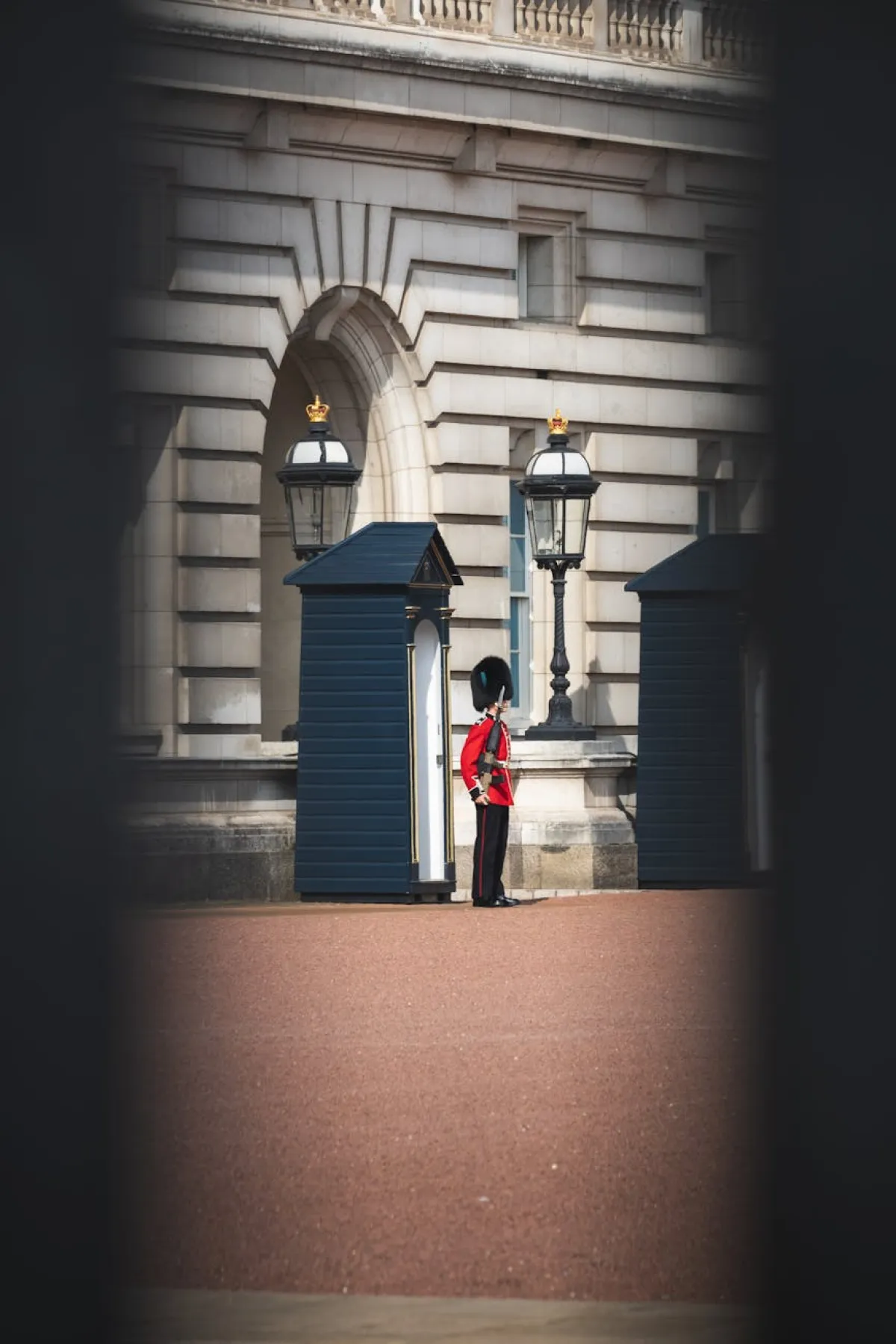
The parade outside the palace starts at around 10:45 and lasts about 45 minutes. The schedule varies but usually takes place at Buckingham Palace on Mondays, Wednesdays, and Fridays. Tip: arrive early for the best view and check the official calendar on the day in case of weather or ceremonial changes.
Visiting Tips
- 🎟️ Book online: summer time slots sell out fast; advance purchase ensures the best prices.
- 📸 Photos: allowed outside; not permitted in the State Rooms.
- ♿ Accessibility: free entry for carers and step-free options available; step-free access must be arranged in advance.
Big Ben

Big Ben is, strictly speaking, the nickname for the Great Bell housed in the Elizabeth Tower at the Palace of Westminster. The tower and its clock are among London’s most iconic landmarks, especially photogenic at dusk when the clock faces are illuminated. The main bell weighs 13.7 tonnes and shares the belfry with four quarter bells that play the famous Westminster chimes every 15 minutes.
The great clock was designed by Astronomer Royal Sir George Airy and barrister-clockmaker Edmund Beckett Denison (later Lord Grimthorpe), and built by master clockmaker Edward John Dent (completed by Frederick Dent). Thanks to its engineering, it remains remarkably accurate to this day.
Big Ben’s chimes are broadcast live on BBC Radio 4 at 18:00 and midnight, and on Sundays at 22:00 — a tradition that began in 1923.
How to visit inside (official Elizabeth Tower tour): Since 2025, tours have been open to the public in limited numbers. Tickets cost £35 for adults and £20 for visitors aged 11–17. The total experience lasts 1 hour 45 minutes (including a 90-minute guided tour). Tickets are released three months in advance, on the second Wednesday of each month at 10:00 (UK time).
Tours usually run Monday to Saturday, with occasional cancellations due to parliamentary business. Minimum age is 11, and the visit involves climbing 334 narrow steps; ear defenders are provided for the bell chamber.
Hello and welcome to my London tour. I'm Jill inviting you to join me for a lovely stroll from Victoria…
From Market to Market: Discover London’s Hidden Stories London isn’t just about Big Ben and …
Quick tips: book in advance via the official website; wear closed shoes and bring no large bags (lockers are available before the tour starts). For the best exterior shots, head to Westminster Bridge or Victoria Embankment at sunset.
Trafalgar Square

Trafalgar Square is London’s civic heart — a grand public space laid out in the 19th century and named after the naval victory of 1805. Its centrepiece is Nelson’s Column, rising 51.6 m and guarded by Landseer’s four bronze lions, with bas-reliefs cast from captured cannons. Traditionally, “distances to London” are measured from Charing Cross, at the square’s southern end.
In the northwest corner stands the Fourth Plinth, home to rotating contemporary art commissions; it currently features Mil Veces un Instante (2024) by Teresa Margolles. On the north terrace, you’ll also find the historic imperial measures — plaques set into the stone showing yards, feet, and chains, a nod to Victorian metrology.
Each December, Oslo gifts London the famous Christmas tree, a tradition started in 1947 as thanks for British support during World War II.
Practical info: the square is open 24/7. Public toilets are on the west side, generally open 10:00–18:00 with a 20p contactless charge.
Nearby: the National Gallery and St Martin-in-the-Fields overlook the square. The nearest Tube stations are Charing Cross, Leicester Square, Embankment, and Piccadilly Circus.
National Gallery
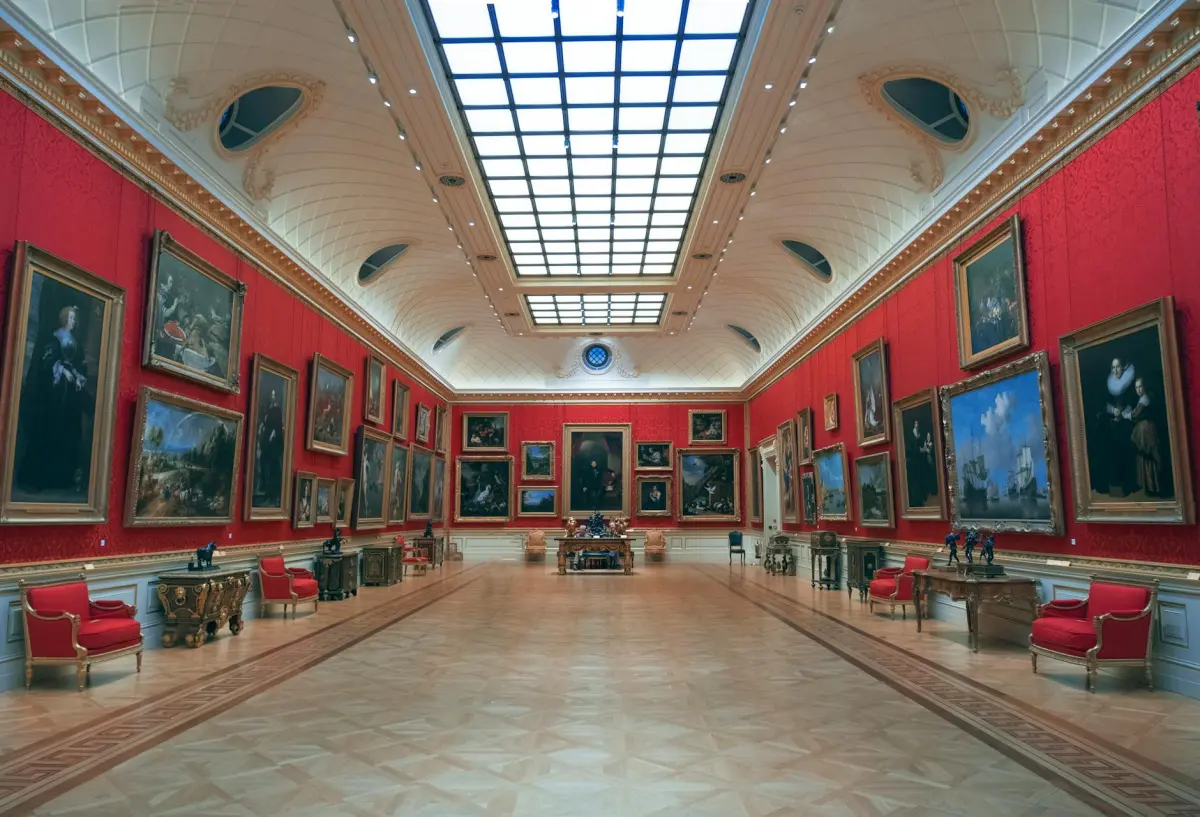
The National Gallery is London’s leading art museum, showcasing European painting from the 13th to the 19th centuries. Highlights include Van Gogh’s Sunflowers, Leonardo da Vinci’s The Virgin of the Rocks, Botticelli’s Venus and Mars, Turner’s Rain, Steam and Speed and The Fighting Temeraire, and Van Eyck’s Arnolfini Portrait.
Opening hours & admission: open daily 10:00–18:00 and Fridays until 21:00. Free general admission (booking a free timed-entry ticket is recommended to speed up entry). Temporary exhibitions are ticketed, starting from £12.
Visitor services: Audio guide £5 if booked online (multiple languages); cloakroom £2 per item (size restrictions apply), open 10:00–17:45 and Fridays until 20:45. Main entrance via the Sainsbury Wing.
Tips for your visit:
- 🎫 Admission: free for the permanent collection; temporary exhibitions require paid tickets (book early).
- 🕒 Best time: early morning or later in the day; Friday lates until 21:00 are quieter.
- 🎧 Audio guide: available in English, Italian, French, Spanish, and Mandarin; pre-book for £5.
- 🎯 Key works: Sunflowers (Van Gogh), The Virgin of the Rocks (Leonardo), Venus and Mars (Botticelli), The Rokeby Venus (Velázquez), Rain, Steam and Speed (Turner), The Water-Lily Pond (Monet), Arnolfini Portrait (Van Eyck).
- 🧭 Orientation: free maps at information desks; thematic routes available for 60–90 min visits.
Kensington Palace
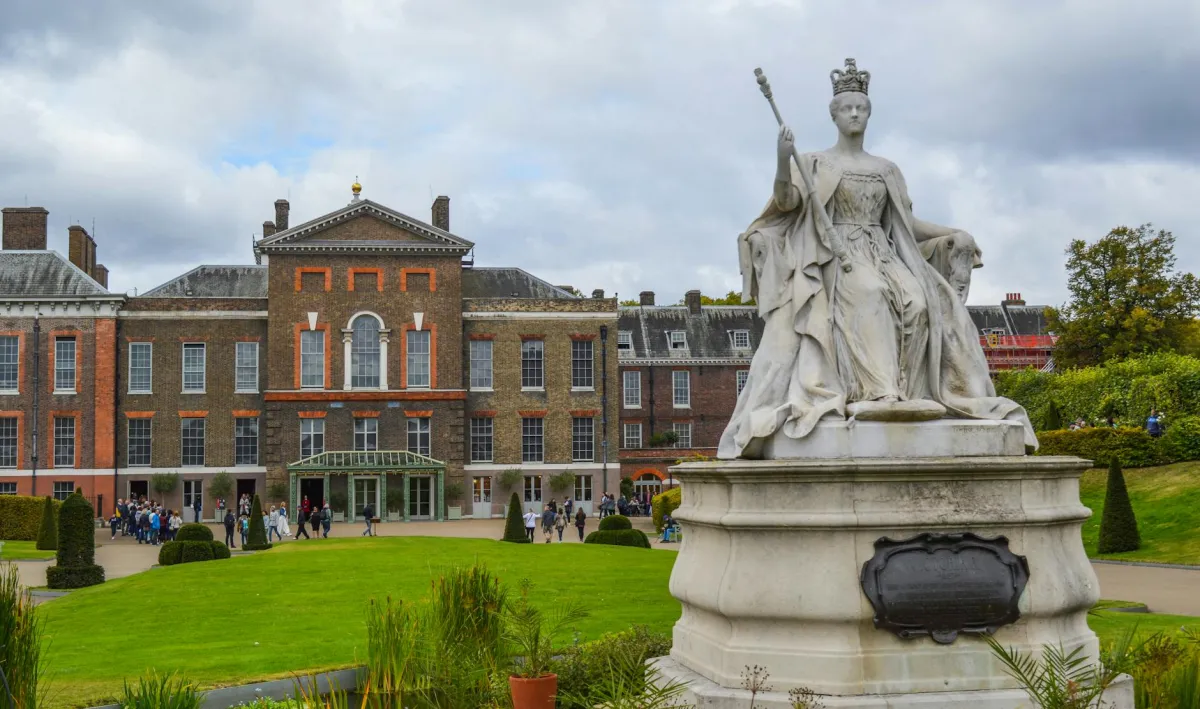
Kensington Palace was expanded in 1690 from the country home of William III and Mary II. The commission went to Sir Christopher Wren, the architect of St Paul’s Cathedral, leaving his mark twice on the city’s skyline. Converted into a royal residence, it now houses historic apartments and permanent exhibitions such as Victoria: A Royal Childhood.
Visiting & hours: allow 1.5–2 hours to explore the King’s State Apartments, Queen’s State Apartments, and the rooms dedicated to Queen Victoria. Open daily 10:00–18:00 (last entry 17:00). The Palace Gardens and Sunken Garden — home to the Diana, Princess of Wales statue — can be seen from the free Cradle Walk between 10:00–18:00 (last entry 17:45).
Tip: combine your visit with a walk through Kensington Gardens and nearby Hyde Park for a green escape in central London. Nearest Tube stations: High Street Kensington (Circle & District), Queensway, and Notting Hill Gate.
FAQ – What to see and do in London

What fun things can you do in London?
London is packed with options: hop on a sightseeing bus or cruise the Thames, explore world-class museums, catch a West End show, get lost in markets like Camden or Borough, enjoy afternoon tea, relax in historic pubs, and cap it off with skyline views from the London Eye, The Shard or Sky Garden.
What are the top attractions to see in London?
Must-sees: Tower of London, Tower Bridge, the British Museum, the London Eye, Westminster Abbey, Buckingham Palace, St Paul’s Cathedral, the Natural History Museum, Covent Garden, Borough Market and Sky Garden. These cover the city’s greatest hits.
What should I do in London in 1 day?
Walk through Westminster (Big Ben, Parliament and the Abbey), cross to the South Bank for the London Eye and a riverside stroll to Millennium Bridge and Tate Modern. Go up St Paul’s or Sky Garden for a quick view, then finish in Covent Garden or Soho for dinner and, if possible, a show.
What to see in London in 3 days?
Day 1: Westminster, Buckingham Palace, St James’s Park, Trafalgar Square and Covent Garden. Day 2: The City & South Bank (Tower of London, Tower Bridge, Borough Market, Tate Modern, St Paul’s, Sky Garden). Day 3: museums (British/Natural History), Notting Hill & Portobello or Greenwich.
Is a 4-day trip to London worth it?
Yes. Four days let you see the highlights at a relaxed pace, explore neighbourhoods like Notting Hill, Shoreditch or South Kensington, and add an extra museum or a short trip (Windsor, Greenwich or Hampton Court).
What can I do in London on a budget?
Many national museums are free (British Museum, National Gallery, Tate Modern). Book Sky Garden at no cost (limited slots), enjoy parks like Hyde Park and Primrose Hill, wander markets (Borough, Camden), cross iconic bridges and hunt for street art in Shoreditch. Eating at food markets helps stretch your budget.
What quirky or unusual things can you do in London?
Try Leake Street Arches (graffiti tunnel), God’s Own Junkyard (neon wonderland), a canal boat in Little Venice, the Postal Museum with its Mail Rail, Highgate Cemetery, house-museums like Dennis Severs’ House, or a themed tour (Jack the Ripper, Harry Potter).
What free things can you do in London?
National museums and galleries, royal parks, the Changing of the Guard (when it runs), markets, walking the South Bank and crossing Tower Bridge or Millennium Bridge. Free viewpoints include Sky Garden (reservation required) and Primrose Hill.
What should I do in London on my first visit?
Focus on the classics: Westminster, Buckingham Palace, Tower of London, Tower Bridge, the British Museum, the London Eye and a wander around Covent Garden/Soho. Add a market (Borough or Camden) and a West End show.
What are the best views in London (London Eye, The Shard and Sky Garden)?
The London Eye offers central views on a giant wheel; The Shard is the highest indoor viewpoint with 360-degree panoramas; Sky Garden is an indoor garden with great views and free entry with a booking. Alternatives: Primrose Hill and Greenwich Park.
Can you walk across Tower Bridge for free?
Yes, walking along the roadway and pavements is free. Only the interior exhibition and the glass walkways (Tower Bridge Exhibition) require a paid ticket.
What day trips near London do you recommend?
Classics: Windsor (castle), Oxford or Cambridge (universities), Bath, Stonehenge with Salisbury, Brighton (seaside), and the Seven Sisters cliffs. Closer options: Greenwich or Hampton Court. All are easy by train or organised tour.
Is London a walkable city for tourists?
The centre is quite walkable with pleasant routes (South Bank, St James’s Park). Distances can be long, though—combine walks with the Tube, buses or river boats to save time.
Best Free Tours in London

Turn back the clock 2000 years and join us as we trace the journey of the City of London ,…
Welcome! My ‘London Essentials’ tour will cover the key sites within the historic royal quarter. Beginning at Wellingt…
Would you like to see the city with a native English-speaking tour guide who has had the honor of being…
When you are tired of London, you are tired of life’ the old saying goes. From the home of the…
Welcome to London! My name is Rich, and as a qualified guide and lifelong Londoner, it will be my pleasure…
This is a tour of the mysteries and secrets of the British Museum. We will travel to Egypt, Me…
Hello and welcome to my London tour. I'm Jill inviting you to join me for a lovely stroll from Victoria…
Disclaimer on prices and schedules (updated: August 2025): All prices, fares, schedules, and other practical information in this article have been verified and are accurate as of August 2025. However, transport companies, restaurants, and attractions may change their conditions without prior notice. We recommend double-checking details on official websites before making any bookings or travel plans.
